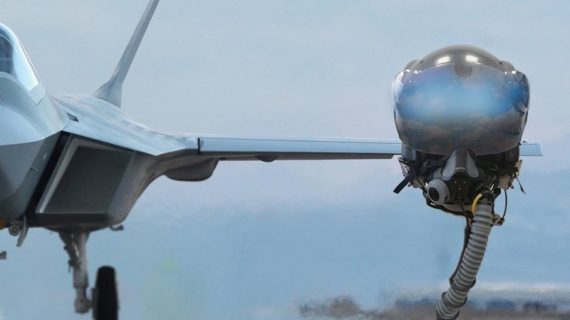The Turkish aviation industry has gained significant momentum, which is reflected in both exports and Turkey’s strengthening position in foreign policy. This increases Turkey’s influence as a smart power, not only in the region where it is located but also on a global scale. For example, BAYKAR has set a new record by exporting $5.5 billion worth of defense industry equipment. Similarly, other prominent Turkish companies such as TUSAŞ and ASELSAN have made significant contributions to this sector.
In 2023, Turkey exported 230 different types of defense equipment to 185 countries, making Turkey one of the leading nations in air combat and defense technology. Advanced aircraft such as Kızıl Elma, Kemankeş, and TB3 will further enhance the country’s capabilities.
Turkey’s first indigenous fifth-generation fighter, the KAAN, successfully completed its maiden flight last month. With this achievement, Turkey joins an exclusive group of nations, along with the United States, the Russian Federation, and China, capable of developing fifth-generation fighter aircraft.
Very recently, ASELSAN announced that it has begun test flights with F-16s of an advanced high-tech pilot’s helmet called “Tulgar”, a Helmet-Mounted Display System, which is integrated with advanced technology and powered by software developed in Turkey. This helmet is specially designed for KAAN. The question now is what these developments mean for Turkey’s defense technology and their broader strategic implications.
Obviously, Turkey’s broader national technology initiative is driven by a concerted effort of various private and state-owned companies. It aims to promote the production of critical technologies that are vital to the country’s security and sovereignty. Achieving this capability is key not only to becoming a global player in critical and cutting-edge technologies but also to strengthening national independence in defense capabilities.
The importance of producing a national fighter such as the KAAN is obvious, but the abilty to produce key components, such as the Tulgar helmet, is a breakthrough. This development underscores the importance of both comprehensive projects and specific innovations that enhance their operational effectiveness.
Technical Insights for Tulgar and How It Compares to the F-35 Helmet
According to the information document provided publicly by ASELSAN, the Tulgar helmet features a visor-projected color display with a 40-degree field of view and integrates digital night vision. It employs a hybrid (inertial and optical) head-tracking system to provide high-fidelity tracking in pilot’s head movements, critical in modern combat scenarios. The helmet is lightweight, weighing less than 2.1 kg, including the oxygen mask, and supports the ARINC-818-2 and Display Port video interfaces, essential for modern avionics. These specifications are designed to enhance the pilot’s situational awareness and mission effectiveness by merging high-resolution images and environmental awareness directly into the pilot’s line of sight.
The Tulgar’s capabilities parallel those developed for the F-35 helmet used on the U.S. advanced fighter jet. Like its U.S. counterpart, the Tulgar uses sophisticated helmet-mounted displays to provide pilots with immersive simulations that enhance training and mission readiness. These displays incorporate augmented reality, night vision, and data-link capabilities to provide pilots with real-time, 360-degree views of their surroundings. Notably, the F-35 helmet is an integral part of the aircraft’s system, significantly impacting its operational capabilities at a cost of approximately $400,000 each.

VIDEO: ASELSAN – The Voice of Turkish National Technology
The development of the Tulgar helmet, with similar high-tech features at a potentially lower cost, could have a considerable impact on Turkey’s defense budget and strategic planning. This cost-effective solution would not only allow for widespread use within the Turkish Air Force, but also enhance the strategic benefits and financial viability of Turkey’s investment in indigenous military technologies such as the KAAN.
Tulgar leverages advanced technologies to act as a force multiplier for pilots, enabling them to perceive and react to their environment with unprecedented precision. The helmet features a visor-projected color display with a 40-degree field of view and integrates digital night vision capabilities. These features provide pilots with a seamless overlay of critical flight and mission data directly in their sight, significantly reducing response times and increasing decision-making efficiency.
In addition, the Tulgar system incorporates a hybrid (inertial and optical) head-tracking capability that accurately captures and interprets the pilot’s head movements, synchronizing the pilot’s view with the aircraft’s sensors and systems. This synergy enhances the pilot’s ability to engage with both the immediate airspace and the broader battlefield environment, ensuring that pilots stay one step ahead of their adversaries.
Recommended
The helmet’s design incorporates lightweight materials and is customized to fit the individual pilot, improving comfort and reducing fatigue during long missions. Active noise reduction helps minimize cockpit noise, allowing the pilot to maintain focus and situational awareness. Furthermore, compatibility with 3D audio systems enhances auditory signals critical to spatial awareness and threat identification.
Overall, the development of the Tulgar helmet represents a significant step forward for Turkey’s defense technology and promises to increase its autonomy in the field of advanced military technologies. By equipping the KAAN fighter with such sophisticated components, Turkey not only enhances its operational capabilities but also positions itself as a formidable player in the global defense technology arena, capable of producing world-class military hardware in line with its strategic security interests.
Moreover, ASELSAN’S development of the Tulgar helmet represents a significant leap forward in high-tech equipment for KAAN fighter pilots. More than just a protective gear, the Tulgar is designed to be an integral part of the pilot’s sensory apparatus, dramatically enhancing situational awareness and combat readiness. This initiative underscores Turkey’s commitment to integrating cutting-edge technology into its defense systems and positions Tulgar as a critical component in modern air warfare.






